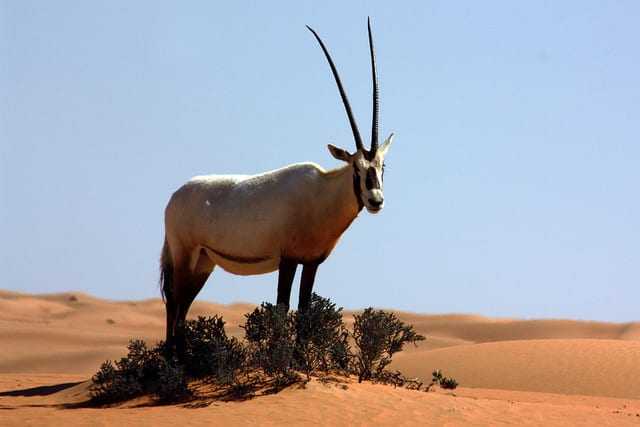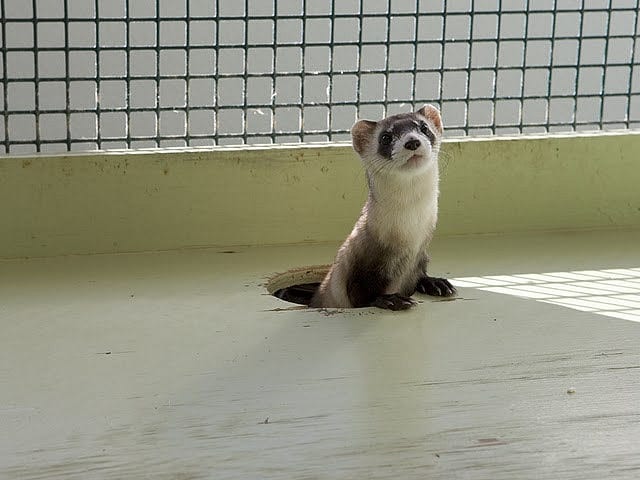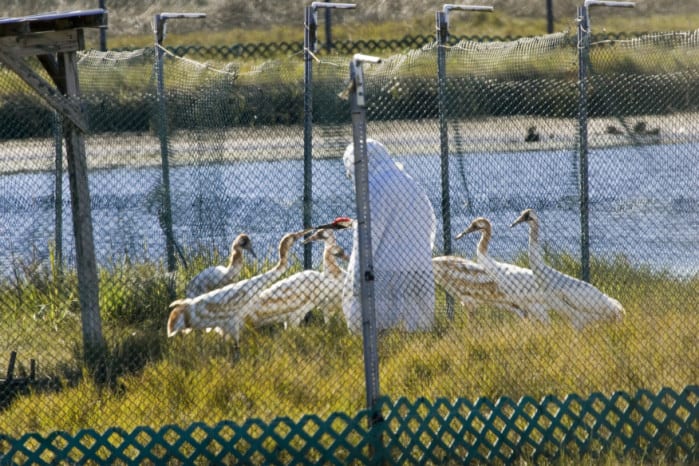George had a problem. He was at least 100 years old and had been living in the same place for 40 years. He led a relatively simple life, though was somewhat overweight and had not left his confining compound since 1972. What was the most unusual thing about George was that he was under enormous pressure to have children with a partner so that his species would not go extinct. Before you start to think this is some horror story about abduction and human trafficking, let me tell you that George, as it turned out, was the last giant tortoise of the species Chelonoidis abingdoni from Pinta Island in the Galapagos Archipelago.
Reintroduction programs
George (or, rather appropriately, “Lonesome Georgeâ€) was the face of the Galapagos giant tortoise reintroduction program for four decades. When an endangered species is on the brink of extinction due to low population size, it often cannot persist without human intervention. Captive breeding and reintroduction programs are one way for humans to help. Reintroduction programs are a type of “ex-situ†conservation strategy, where individuals of a threatened or endangered species are brought into captivity to produce young with human assistance. Typically, reintroduction programs are nested inside zoos and sanctuaries. Ultimately, the goal of these programs is to release the animals reared in captivity back into the areas where the species was found, and to help maintain self-sustaining populations in the wild. A self-sustaining population means that the population can persist on its own without any human intervention.
One of the first success stories of reintroduction programs is the one of the Arabian oryx, an antelope species in the Middle East. The captive breeding program was started back in 1962 when the species was considered extinct in the wild. The last few individuals were brought into captivity and their offspring were first released back into Oman in 1982, then subsequently in Israel, Jordan, Saudi Arabia, and United Arab Emirates. Currently, the species is considered “vulnerable†under the IUCN criteria which is a level lower than “endangeredâ€, and wild populations appear to be stabilizing over the years. Other notable stories include the captive breeding of the black-footed ferrets, the California condors, and the blue tangs. And of course most readers might have seen videos or heard about the stories of giant pandas in captivity.

- An Arabian oryx in the Dubai Desert Conservation Reserve (credit: Charles Sharp)

What happens in captivity…
Needless to say, a big part of the success of a captive breeding and reintroduction program hinges on the willingness of the animals to mate with each other in captivity and produce offspring. So what happens if the animals are just not feeling “friskyâ€? Sure they may blame it on “having a headache†or maybe “feeling a little bloated tonightâ€, but when the survival of the entire species hangs on the balance, extreme measures must be taken. Zookeepers and researchers have come up with some very creative ways to induce mating among captive animals. An example is this infamous “ejaculation helmet†used to collect semen from Sirroco, the mascot for New Zealand's Kakapo Recovery Program. Sirocco was a hand-reared kakapo, an endangered flightless parrot species in New Zealand. As such, he imprinted on humans and apparently had a penchant to copulate with human heads instead of real kakapos (For those dying to see what that looks like, check out this video). The caretakers then came up with the ejaculation helmet, hoping to collect a few of Sirroco's best swimmers to inseminate the other female kakapos.
Challenges of reintroduction programs
As with many other conservation strategies, captive breeding comes with certain challenges. First, as most of the species in captivity are endangered, there are not a lot of individuals that can be used to produce offspring. Having few individuals means that there is little room to work with in terms of genetic diversity, because there is only so many possible pairings. Lack of genetic diversity can lead to problems such as genetic diseases that can be passed onto future generations and threaten the species' survival.
Another challenge with captive breeding programs, as was demonstrated by Sirroco, is the animal's tendency to imprint on humans if they were bred and reared by humans. To solve this problem, caretakers have used a variety of methods to reduce the opportunity of imprinting, one of which is to literally dress up as the parents of the baby animals while feeding them and tending to their well-being. While this strategy reduces the effects of the young imprinting on humans, it does not solve the issues created by the absence of wild parents, however. For example, some of the whooping cranes that were reared in captivity by hand puppets turned out to be inexperienced parents and often abandoned their nests before the eggs were hatched.

Life after reintroduction
The method with which animals are released into the wild depends on how well they adjust to life in the wild. Sometimes, scientists conduct “soft release†of captivity-reared individuals, meaning that conservationists continuously provide resources in the way of food or shelter for the animals when they are first released, then slowly remove the supplemental resources as the population reestablishes itself. A “hard releaseâ€, on the other hand, means that no help is given to the released individuals. Regardless of the method of release, it is essential to continuously monitor the individuals to see how well they cope once released into the wild. Additionally, it is essential to make sure that there is sufficient habitat to support the released individuals in the long run both before and after the reintroduction so the animals can establish self-sustaining populations.
What happened to George?
Due to some of the unintended consequences (e.g. human imprinting) and the invasive nature of the method compared to other conservation efforts such as habitat restoration, the WWF deemed captive breeding and reintroduction programs as “the ‘last resort' strategy†reserved for species in such dire situations that they would go extinct without outside assistance, such as Lonesome George's species – the Pinta Island tortoises. Try as they might, however, researchers were unable to find George a compatible mate, and he eventually died in captivity in 2012 without siring any offspring. All may not be lost, however. After George's death, scientists found hybrid giant tortoises on another Galapagos island that share similar genetics as the Chelonoidis abingdoni. There is a possibility that scientists can recreate individuals that share similar genes as the original Pinta Island tortoises through selective breeding of these hybrids and reintroduce them in the species' native range.
About the author:
 |
Angela Hsiung is a PhD student in Warnell School of Forestry and Natural resources at UGA. She enjoys studying wildlife and fish ecology and conservation. Aspiring to be a master of none, when Angela is not at school, she can be found lagging behind a group of runners while gasping for breath, mis-identifying a bird, or failing spectacularly at playing “Sweet Home Alabama†on the guitar. You can contact her at solitaire.hsiung@gmail.com. More from Angela Hsiung. |
About the Author
- athenssciencecafehttps://athensscienceobserver.com/author/athenssciencecafe/April 17, 2020
- athenssciencecafehttps://athensscienceobserver.com/author/athenssciencecafe/April 12, 2020
- athenssciencecafehttps://athensscienceobserver.com/author/athenssciencecafe/April 3, 2020
- athenssciencecafehttps://athensscienceobserver.com/author/athenssciencecafe/March 30, 2020







